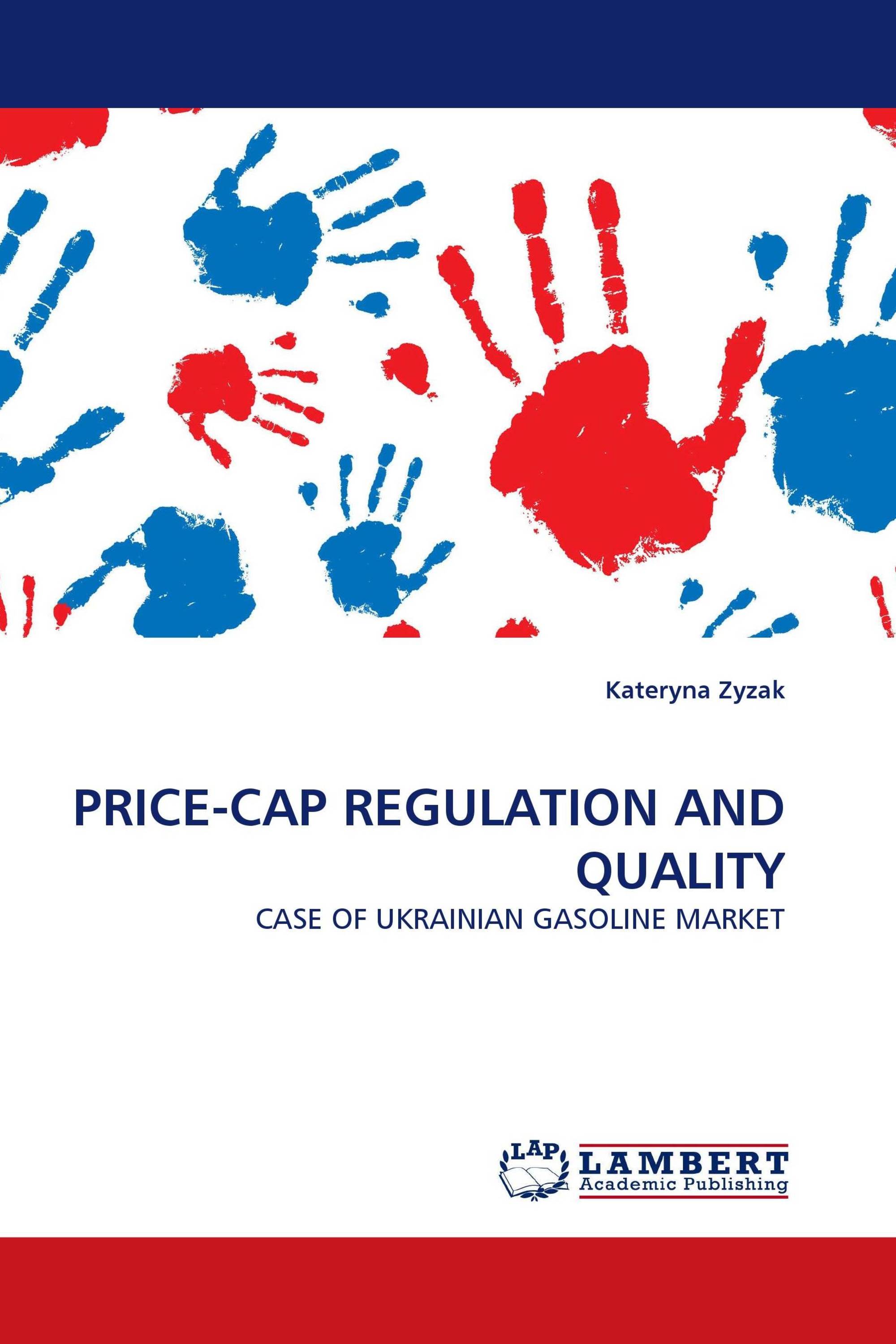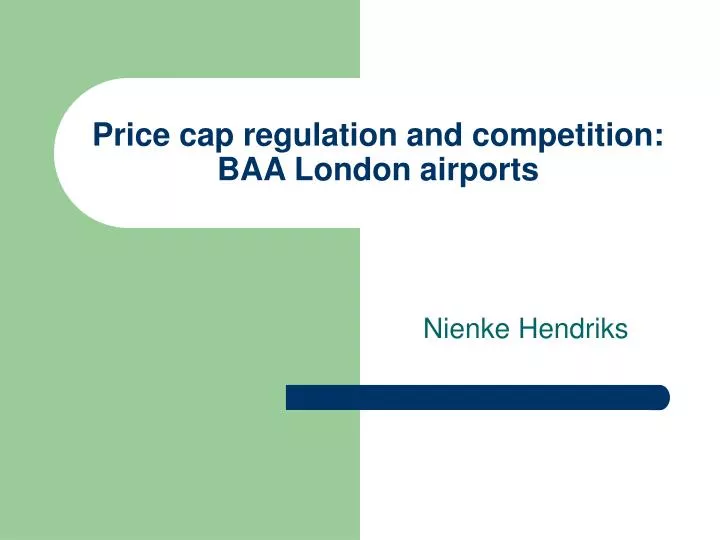Price-Cap Regulation : What it is
Price-Cap Regulation: What It Is Price-cap regulation is a form of government regulation that sets a limit or cap on the prices that can be charged for certain goods or services. It is often used in industries that have been deemed to have significant market power, such as utilities or transportation. The goal of price-cap regulation is to strike a balance between protecting consumers from monopolistic pricing practices and ensuring that companies have enough incentive to invest in infrastructure and provide high-quality services. In this article, we will explore the concept of price-cap regulation in more detail. We will discuss how it works, its advantages and disadvantages, and its impact on competition. Additionally, we will provide some real-life examples and address some frequently asked questions. 1. How Does Price-Cap Regulation Work? Under price-cap regulation, a regulatory agency sets a limit or cap on the prices that a company can charge for its products or services. This cap is typically adjusted periodically, taking into account factors such as inflation and changes in the company's costs. To enforce the price cap, the regulatory agency may use various mechanisms. For example, it may require the company to submit regular reports detailing its costs, revenues, and prices. It may also conduct audits or inspections to ensure compliance. If a company is found to be charging prices above the cap, it may be subject to penalties or fines. 2. The Advantages of Price-Cap Regulation Price-cap regulation has several potential advantages. One of the primary benefits is that it can protect consumers from monopolistic pricing practices. By setting a cap on prices, the regulatory agency ensures that consumers are not charged excessively for essential goods or services. This can be particularly important in industries where there is limited competition. Another advantage is that price-cap regulation provides certainty to both consumers and businesses. Consumers can have confidence that prices will not increase beyond a certain level, allowing them to plan their budgets accordingly. Similarly, businesses can have a clear understanding of the maximum prices they can charge, which helps them make informed investment decisions. Finally, price-cap regulation can also encourage efficiency and innovation. By limiting the profits that can be earned through price increases, the regulatory agency creates an incentive for companies to find cost-saving measures and develop new products or services. This can lead to improved productivity and increased competitiveness in the market. 3. The Disadvantages of Price-Cap Regulation While price-cap regulation has its advantages, it also has some disadvantages that need to be considered. One of the main drawbacks is the potential for underinvestment in infrastructure. When prices are capped, companies may have less revenue available to invest in upgrading their facilities or expanding their capacity. This can lead to issues such as aging infrastructure and service quality degradation over time. Another disadvantage is the potential for cross-subsidization. In some cases, price-cap regulation may allow companies to charge higher prices for certain products or services to compensate for the capped prices of others. This can result in a redistribution of costs among different customer groups, potentially leading to inequitable outcomes. Additionally, price-cap regulation may create regulatory burden and administrative costs. Companies may need to allocate resources to comply with reporting requirements, inspections, and audits. These additional costs can be passed on to consumers through higher prices or reduced service quality. 4. Real-Life Examples of Price-Cap Regulation Price-cap regulation has been implemented in various industries around the world. One significant example is the regulation of London airports by the British Airport Authority (BAA). In this case, price caps were imposed to ensure that charges for using airport facilities remained reasonable and prevented excessive profits. The regulation aimed to balance the need for investment in airport infrastructure with protecting the interests of airlines and passengers. Another example of price-cap regulation is seen in the telecommunications industry. Many countries have implemented price caps to promote competition and affordability in the provision of telecommunication services. These caps aim to prevent dominant telecommunications companies from abusing their market power and charging exorbitant prices. FAQ Section Q: Are price caps the only form of regulation used in industries with significant market power? A: No, price caps are just one tool that regulatory agencies can use. Other forms of regulation include quality standards, performance targets, and profit-sharing mechanisms. Q: How often are price caps adjusted? A: The frequency of price cap adjustments varies depending on the industry and the regulatory agency. In some cases, adjustments may be made annually, while in others, they may occur every few years. Q: Can price-cap regulation lead to a lack of innovation? A: While price caps may create some disincentives for innovation, regulatory agencies typically consider this aspect and aim to strike a balance between affordability and incentivizing investment in research and development. In conclusion, price-cap regulation plays a crucial role in protecting consumers and promoting competition in industries with significant market power. By setting limits on prices, it ensures that consumers are not exploited while still allowing companies a reasonable return on investment. While it has its advantages and disadvantages, effective price-cap regulation can help create a fair and competitive marketplace.  Image Source : www.researchgate.net
Image Source : www.researchgate.net  Image Source : www.chegg.com
Image Source : www.chegg.com  Image Source : www.researchgate.net
Image Source : www.researchgate.net  Image Source : www.lap-publishing.com
Image Source : www.lap-publishing.com  Image Source : www.researchgate.net
Image Source : www.researchgate.net  Image Source : www.slideserve.com
Image Source : www.slideserve.com  Image Source : 996forrestruizheadline.blogspot.com
Image Source : 996forrestruizheadline.blogspot.com  Image Source : www.academia.edu
Image Source : www.academia.edu
The Disparate Adoption Of Price Cap Regulation In The U.S
 Image Source : www.researchgate.net
Image Source : www.researchgate.net telecommunications sectors disparate electricity regulation adoption cap price
Solved ANswer Bank Price Cap Regulation Describes A Policy | Chegg.com
 Image Source : www.chegg.com
Image Source : www.chegg.com (PDF) Price-cap Regulation
 Image Source : www.researchgate.net
Image Source : www.researchgate.net regulation cap price
PRICE-CAP REGULATION AND QUALITY / 978-3-8383-8919-6 / 9783838389196
 Image Source : www.lap-publishing.com
Image Source : www.lap-publishing.com regulation cap quality price temple entry dalit odisha protest movements kendrapara district study
6-Error On Optimal Pice Cap When Not Taking Into Account Demand
 Image Source : www.researchgate.net
Image Source : www.researchgate.net pice optimal demand volatility
PPT - Price Cap Regulation And Competition: BAA London Airports
 Image Source : www.slideserve.com
Image Source : www.slideserve.com regulation airports cap price baa competition london ppt powerpoint presentation
Price Cap Regulation
 Image Source : 996forrestruizheadline.blogspot.com
Image Source : 996forrestruizheadline.blogspot.com (PDF) Price Cap Regulation And The Ratchet Effect: A Generalized Index
 Image Source : www.academia.edu
Image Source : www.academia.edu Regulation airports cap price baa competition london ppt powerpoint presentation. Price cap regulation. Regulation cap quality price temple entry dalit odisha protest movements kendrapara district study. Price-cap regulation and quality / 978-3-8383-8919-6 / 9783838389196. 6-error on optimal pice cap when not taking into account demand